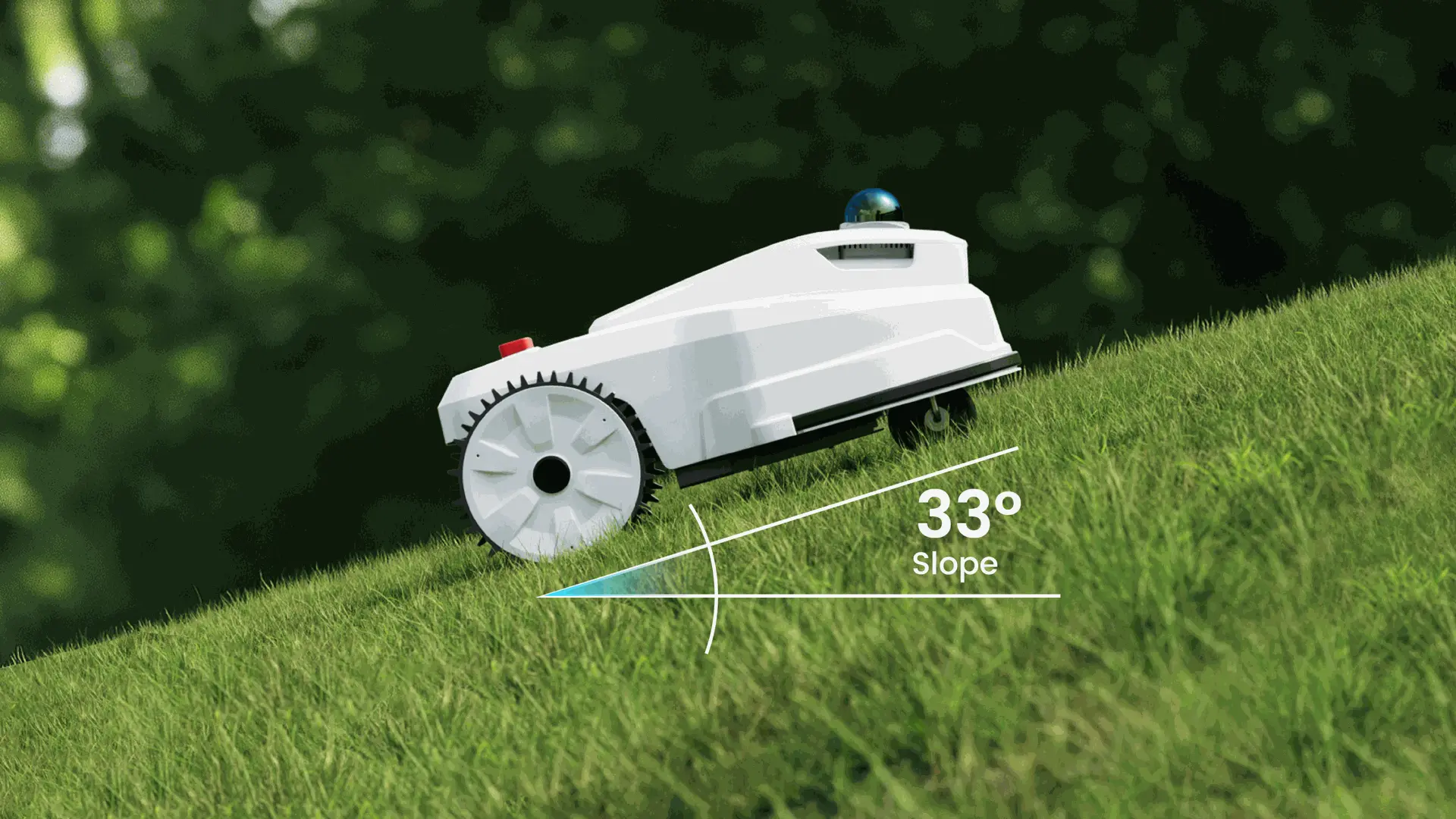Introduction: Challenges of Sloped and Uneven Lawns
Maintaining a beautiful lawn can be challenging, and if your yard has slopes, hills, or uneven terrain, the task becomes even more demanding. Traditional mowers can struggle with traction on steep or irregular surfaces, making it hard to achieve a uniform cut. Many homeowners wonder whether robotic lawn mowers, known for convenience and automation, can handle such conditions effectively.

With the advancement of robot lawn mower technology, these machines can now navigate complex terrains with precision. Understanding how robotic mowers operate on slopes and uneven surfaces is key to making an informed purchase decision.
Shop Now !How Robot Lawn Mowers Handle Slopes and Uneven Terrain
Motor Power and Wheel Design
Robotic lawn mowers are designed with powerful motors and specialized wheel systems. Motor power ensures the mower can climb slopes without stalling, while wheels provide traction on wet or uneven grass. High-quality models, such as FJDynamics FV2000, feature all-terrain wheels that grip well, reducing slippage and ensuring smooth mowing even on challenging terrain.
Cutting Blade Adjustments
Uneven lawns require precise cutting to avoid missed patches or inconsistent grass height. Robotic mowers use adjustable cutting blades to maintain a consistent cut across slopes and irregular surfaces. This ensures your lawn looks neat and well-maintained without requiring manual intervention.
RTK and LiDAR Navigation Advantages
Advanced navigation technologies, including RTK (Real-Time Kinematic), allow robotic lawn mowers to map terrain in detail. These systems detect slopes, obstacles, and uneven areas, enabling the mower to plan optimal paths. For instance, FJDynamics FR4000 and FV2000 use RTK navigation and wire-free setup to safely maneuver on complex landscapes without getting stuck.
Slope and Terrain Limits
Maximum Slope Ratings for Different Models
Not all robotic mowers are designed for steep slopes. Each model has a maximum slope rating, usually measured in degrees or percentage incline. While most consumer-grade models handle 20–25° slopes, both FJDynamics FR4000 and FV2000 can tackle slopes up to 33° (approximately 65%). Knowing these limits ensures safety and effective mowing.
FJDynamics FR4000 and FV2000 Slope Capabilities
Both FR4000 and FV2000 are engineered to handle uneven and sloped lawns efficiently. They automatically adjust speed and blade height based on terrain, providing consistent results. Obstacle avoidance systems prevent collisions with trees, rocks, or garden furniture, which is especially important on uneven terrain.
Benefits of Using Robot Mowers on Uneven Lawns
Consistent Grass Height
Robotic lawn mowers follow precise mowing patterns, ensuring uniform grass height across slopes and irregular areas. Regular mowing improves lawn health and appearance without manual effort.
Reduced Physical Effort
For hilly or uneven lawns, manual mowing can be exhausting. Robot lawn mowers like FR4000 and FV2000 automate this process, allowing homeowners to save energy and focus on other tasks.
Time-Saving Automation
Scheduled mowing routines mean robotic mowers can operate even when you are away. Advanced models handle slopes and uneven surfaces independently, making them ideal for busy homeowners. Automation also reduces the need for frequent lawn maintenance.
Tips for Optimizing Performance on Sloped Lawns
Lawn Preparation
Before using a robotic mower, remove large rocks, branches, and other obstacles. While FR4000 and FV2000 detect smaller obstacles automatically, clearing debris ensures optimal performance and safety.
Scheduling and Safety Precautions
Set mowing schedules during dry periods for better traction. Wet grass can be slippery, reducing mower effectiveness and safety. Ensure children and pets are kept away from the mowing area, especially on steep sections.
Choosing the Best Robot Mower for Slopes
Features to Look For
When selecting a robotic lawn mower for uneven or sloped lawns, consider:
- Maximum slope capability
- Obstacle detection and avoidance
- Adjustable cutting heights
- Battery life and coverage area
- Navigation technology (RTK)
- Wire-free installation and app control
Why FJDynamics FR4000 and FV2000 Stand Out
Both FR4000 and FV2000 combine RTK navigation, wire-free setup, and advanced obstacle avoidance to handle complex terrains. They offer:
- Slope handling up to 33° (65%)
- Consistent and precise mowing
- App control and monitoring
- Competitive pricing and reliable after-sales service
FJDynamics has a long-standing presence in the agricultural industry and has recently expanded into robotic lawn mowers, ensuring both quality and support for homeowners.
Conclusion: Reliable Lawn Care on Any Terrain
Robotic lawn mowers are now capable of handling uneven and sloped lawns thanks to advancements like RTK navigation, all-terrain wheels, and obstacle avoidance. High-quality models such as FJDynamics FR4000 and FV2000 provide consistent mowing, reduced physical effort, and time-saving automation.
By understanding slope limits, preparing your lawn, and choosing models with advanced features, homeowners can enjoy a well-manicured lawn on any terrain with minimal effort. Modern robotic mowers make lawn care efficient, precise, and worry-free.
Our latest products
Check out what's new in our company !